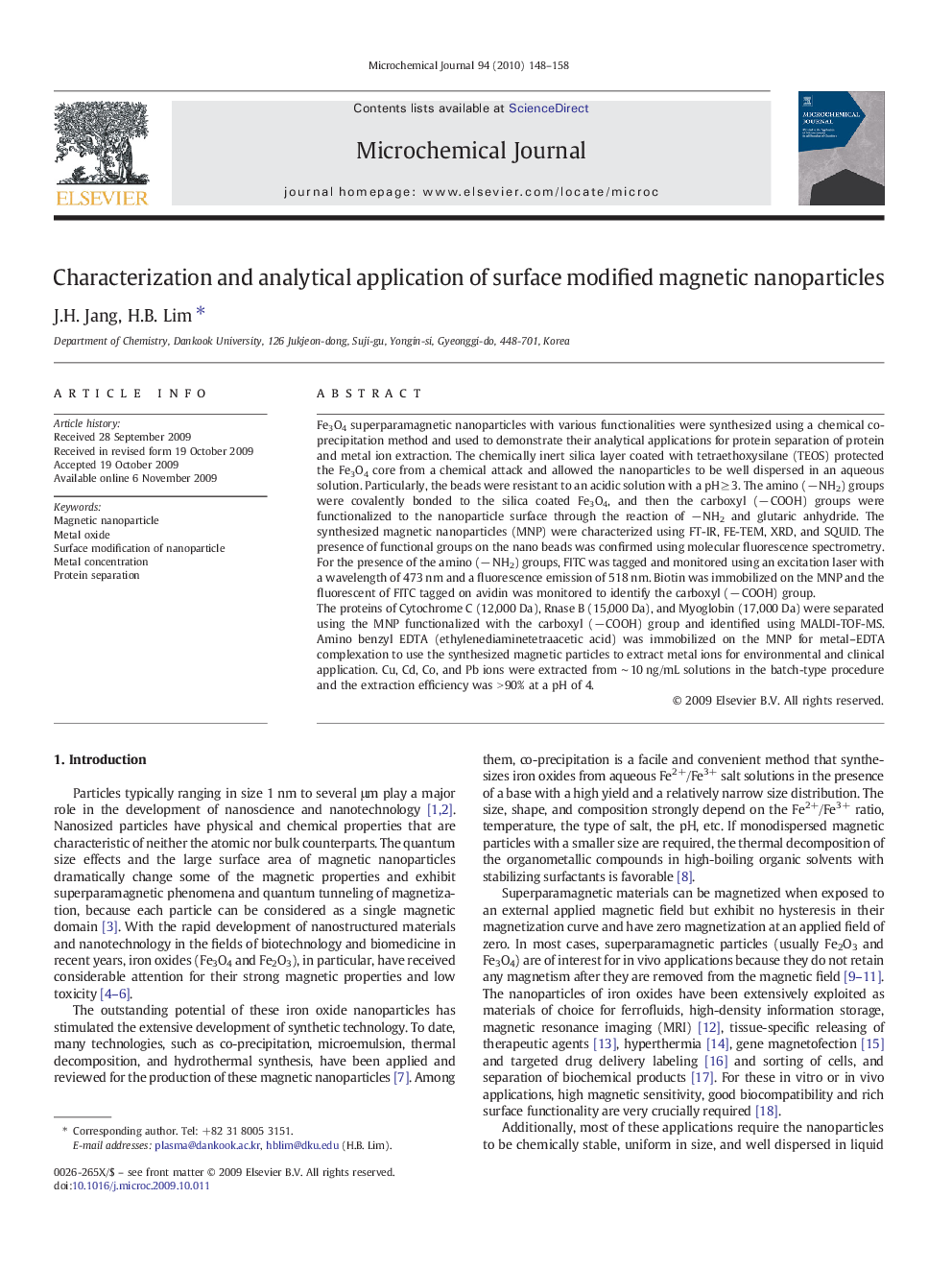| Article ID | Journal | Published Year | Pages | File Type |
|---|---|---|---|---|
| 1228319 | Microchemical Journal | 2010 | 11 Pages |
Fe3O4 superparamagnetic nanoparticles with various functionalities were synthesized using a chemical co-precipitation method and used to demonstrate their analytical applications for protein separation of protein and metal ion extraction. The chemically inert silica layer coated with tetraethoxysilane (TEOS) protected the Fe3O4 core from a chemical attack and allowed the nanoparticles to be well dispersed in an aqueous solution. Particularly, the beads were resistant to an acidic solution with a pH ≥ 3. The amino (− NH2) groups were covalently bonded to the silica coated Fe3O4, and then the carboxyl (− COOH) groups were functionalized to the nanoparticle surface through the reaction of − NH2 and glutaric anhydride. The synthesized magnetic nanoparticles (MNP) were characterized using FT-IR, FE-TEM, XRD, and SQUID. The presence of functional groups on the nano beads was confirmed using molecular fluorescence spectrometry. For the presence of the amino (− NH2) groups, FITC was tagged and monitored using an excitation laser with a wavelength of 473 nm and a fluorescence emission of 518 nm. Biotin was immobilized on the MNP and the fluorescent of FITC tagged on avidin was monitored to identify the carboxyl (− COOH) group.The proteins of Cytochrome C (12,000 Da), Rnase B (15,000 Da), and Myoglobin (17,000 Da) were separated using the MNP functionalized with the carboxyl (− COOH) group and identified using MALDI-TOF-MS. Amino benzyl EDTA (ethylenediaminetetraacetic acid) was immobilized on the MNP for metal–EDTA complexation to use the synthesized magnetic particles to extract metal ions for environmental and clinical application. Cu, Cd, Co, and Pb ions were extracted from ∼ 10 ng/mL solutions in the batch-type procedure and the extraction efficiency was > 90% at a pH of 4.
